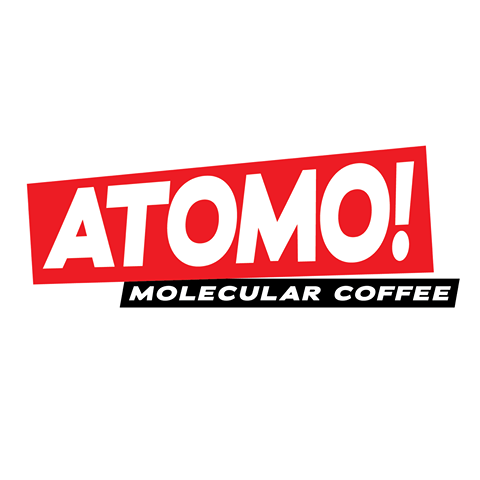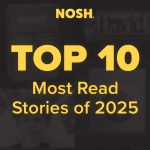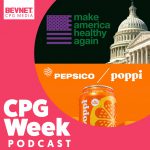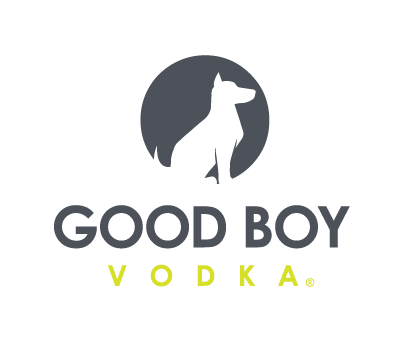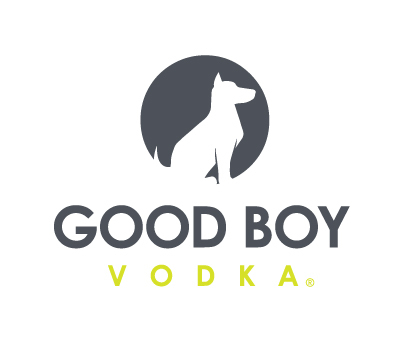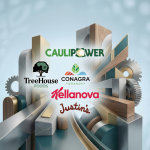Can Beanless Coffee Solve The Industry’s Sustainability Problems?

As history has proven, humans, no matter how extreme the conditions or circumstances, need their coffee – or at least something that comes pretty close.
During the Civil War, Union blockades of Confederate ports starved Southerners of fresh coffee, forcing them to turn to brewed chicory root as a suitable alternative. Similarly, World War II rationing in England made roasted, ground figs and even acorns a decently satisfying simulacrum for the hot, bitter drink. Some of these alternatives are still around – complemented by newer players like MUDWTR and various “superfood” powder blends – and might even be seeing a resurgence as part of rising consumer interest in health and wellness products.
On any given day there are about 2 billion cups of coffee consumed worldwide with about 517 million slurped down in the U.S. alone.
But as the world confronts the existential and urgent challenge of halting the ravages of climate change, the coffee plant itself has become a flashpoint for concern and controversy. Extreme weather is helping lead to a rise of agricultural pests and diseases like coffee rust, but producers are also increasingly encroaching into tropical forests and seeking land at higher elevations to cultivate their crops. Meanwhile, in areas with full sun-grown coffee cultivation, there is concern that deforestation will become a bigger hurdle for sustainability.
In recent years, those problems have drawn the attention of a new generation of food tech brands aiming to save the crop from its path towards a potentially unsustainable future.
Defying easy categorization, this emerging group of “beanless coffee” brands is targeting regular drinkers with a pitch that climate change and increasing global demand for coffee – especially in traditionally non-coffee drinking areas like China, Japan and India – is stretching the crop to the limits of environmental sustainability. With that in mind, several competing food tech operations are messaging that the best way to address the problem is for consumers to ditch coffee beans in favor of products that are viable long-term alternatives which use less land, less water and have a lower carbon footprint but still produce a cup that looks, smells and tastes like the real thing.
Coffee-less Coffee Beans
One approach to solve for the razing of tropical forests in order to plant more coffee farms is to take the agricultural product out of the equation.
David Klingen co-founded Northern Wonder, marketed as “coffee-free coffee,” on the principle that creating a more sustainable coffee alternative should accomplish three things: it should taste and smell like coffee, it should be caffeinated and it must be “brewable” – meaning it should be able to be prepared using everyday methods like pour-over, French press or even a pod.
“Our challenge is to make a drink which is as coffee-like as possible,” Klingen told NOSH. “People are addicted to caffeine and they like it to be packed in a nice warm brown drink. That is the main reason people drink coffee. It’s not so much about the taste, they’re addicted to caffeine and they want a smooth method of entering that drug into the body.”
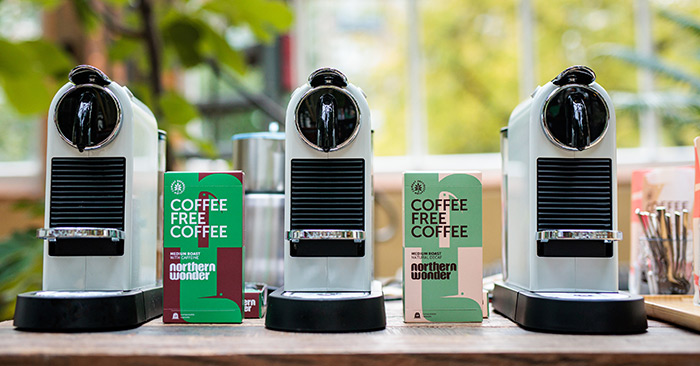
The Netherlands-based company has developed its product by using non-tropical agricultural ingredients like rye, barley, lupin beans, chickpeas, chicory and dandelion roots among others. These ground ingredients are mixed with synthetic caffeine to mimic the experience of brewing and drinking a cup of joe. Why non-tropical agricultural commodities? According to Klingen, it not only decreases the amount of forests being replaced by new coffee plantations but significantly lowers the company’s water usage, land usage and carbon footprint relative to traditional coffee.
According to the company’s LCA self assessment (set to be released publicly in coming weeks), Northern Wonder products create at least 1/3 less carbon (kg co2 per kg) and consume 1/3 less land and significantly less water than most coffee plants.
“We’re not against coffee but we are against deforestation caused by expanding coffee plantations,” he said.
According to ourworldindata.com, coffee is ranked fifth in a list of foods that create greenhouse gas emissions across the supply chain only trailing behind beef, lamb, cheese, dairy cows and chocolate.
In October, Northern Wonder launched a four-SKU line of “blending and mixing” products in the Netherlands, available in caffeinated and decaffeinated versions of Nespresso-machine ready pods and packaged formats. Eventually the company will release an espresso blend, but the products are really setting the table for an in-development product that Klingen said will “get closer to real coffee.”
Northern Wonder’s “holy grail” product, Klingen explained, is a physical “pressed bean” of the coffee alternative that mimics the aromas and volatiles that are encapsulated in a whole roasted coffee bean and offer the same sensory process of making and enjoying coffee. The company insists that it is much more than a reformed version of the current ingredients into a bean shape but opens up enormous potential for aroma optimization.
On the ready-to-drink side of the aisle, coffee brands like Minus Coffee and Atomo are positioning themselves as molecular-made beanless coffee companies using a similar marketing strategy to lab-grown/cell-cultured meat and dairy.
San Francisco-based Minus Coffee calls coffee production “an environmental disaster” on its website, which notes that coffee needs “37 gallons of water to make 1 cup of coffee and 1 kg of coffee creates 17 kg of carbon emissions.” According to the brand, Minus produces coffee with less water and environmental damage via a shorter supply chain.
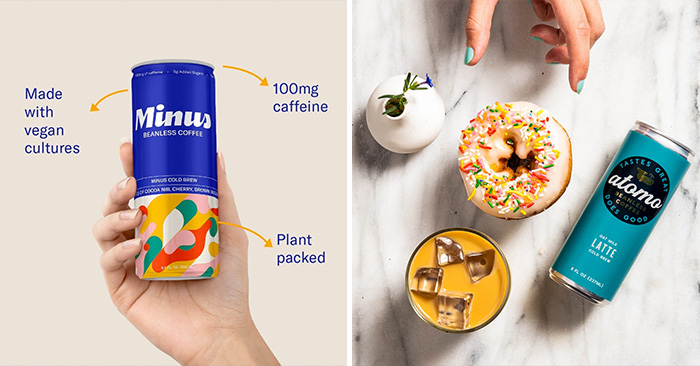
For both Minus and Seattle-based competitor Atomo Coffee, claims to have reverse-engineered coffee are anchored in the use of date seeds, chicory root and other ingredients, which they say recreates the taste of cold brew.
Technology company Voyage Foods has developed a similar innovation in its beanless coffee product using upcycled grains and legumes as the basis for the beverage. It is processed similarly to traditional coffee manufacturing with minor modifications, but no cellular agriculture or fermentation technology is used, a Voyage Foods representative told NOSH.
Voyage Foods is taking a slightly different approach. It is positioning itself as a private label supplier for c-stores or grocery distributors as opposed to releasing its own retail product. For Voyage founder Adam Maxwell, it is about how to make the most impact.
“We’re not going to be the Starbucks or Dunkin of RTDs in the coffee space. It’s just not realistic,” he said. “So how do we actually reduce total emissions? It’s being an industrial supplier, and the way to do that fastest is with the multinationals.”
Maxwell’s pitch to multinationals is that Voyage can offer a new RTD coffee alternative that helps meet the lofty ESG goals set by large food companies while providing cost benefits through its vertically integrated manufacturing model.
“Those are steep cliffs. They have to drop emissions very fast,” he continued. “One of the things I’m so excited about and what we’ve built is we’re really in a sea of high cost ESG alternatives. There are not that many players that can offer cost benefits while offering radical improvements in emissions and water usage.”
Maxwell said that the company is in talks with some large distributors and expects to start producing its beanless coffee as a co-manufacturer later this year.
Are Coffee Alternatives The Solution?
Even as buzz around innovative products and brands is high, some experts argue that deforestation is not necessarily the main concern for creating sustainable coffee production long-term. Although destroying ecosystems for farming is a problem, other issues like land stewardship (or usage) and clean water conservation could potentially make a bigger impact.
Academics studying sustainability in coffee-growing regions paint a slightly different picture of the problems in the crop’s supply chain. They point out that the environmental problems around coffee production are too varied to be lumped together into the one or two broad issues highlighted by alternative coffee companies. Solutions vary depending on the growing region, the type of coffee plants cultivated and the farming practices used to harvest the beans. Innovation further upstream could also help to meet growing consumer demand as well as addressing environmental concerns in its production model.
Coffee farmers can utilize sustainable farming practices like composting, intercropping and agroforestry to highlight the plant’s ability to grow in complex agro-ecological environments and make it more sustainable, said Dr. Sarah Brinkley, who studied soil management techniques and climate resiliency in coffee production at Texas A&M University.
“The way you’re farming coffee is what makes it more or less sustainable,” she said.
She argues that there is a need for more consumer buy-in, like placing more value on sustainably-farmed coffee, which can mitigate the negative effects of climate change, rather than new products that circumvent the work of coffee farmers. Many coffee industry experts agree.
“These products are creative, but they aren’t coffee—and because of that, they won’t help coffee farmers create real climate solutions,” World Coffee Research CEO Dr. Jennifer “Vern” Long told NOSH in a statement. “Science and technology can do amazing things, and we should be orienting the power of innovation toward farmers. If we do, we can create incredible opportunities for the farmers and consumers worldwide who share a passion for coffee.”
There’s a similar problem when it comes to marketing these innovative brands, as well: Although there is a niche for coffee alternatives that promote climate resiliency, most specialty coffee drinkers can find real coffee that makes similar claims of sustainability. The industry is rife with sustainability solutions from nursery programs to upcycling elements of the production model to developing climate resistant strains of coffee plants.
As for “molecular” brands, Spencer Turer, VP at coffee industry consultancy firm Coffee Enterprises, is skeptical that claims about coffee’s unsustainability are really moving consumers away from the beverage.
“Calling these alternative products ‘coffee’ does great harm to coffee products. And it causes great confusion to the consumer.”
That echoes similar arguments made by the meat and dairy industry when referring to plant-based or cell-cultured meat, seafood or dairy products. Turer argues that calling a “beanless coffee” that contains no coffee “is not appropriate from a labeling perspective.”
It’s not that a more sustainable coffee alternative does not have a place in the market, but the question remains if this is the best solution to solving unsustainability in coffee’s supply chain.
Many specialty coffee drinkers like that there is a story that comes with drinking a higher-end brew. Similar to wine appreciation there is a lineage that comes with certain coffees that is linked to a place and a people that have been cultivating these crops for generations. Coffee made in a lab may not carry that same narrative that consumers latch onto and also does not help those farmers continue to ply their trade in more sustainable ways.
The size of the audience remains unclear, even amongst beanless coffee’s target demographic – “dark green consumers” who “have solar panels on their roofs, or buy organic cotton, or eat less or no meat,” as Northern Wonder’s Klingen calls them. For Northern Wonder, the consumer audience is less important right now because the brand is still so young. But considering the huge market for coffee, “if we have 1% and see ourselves as a niche player, then we are already a multi-million [dollar] company,” he noted.
Turer claims, however, that those millions could be better spent.
“Do we really need a product that’s an alternative to something that is a basic, primary agricultural product?” he said. “The millions of dollars that are being devoted to investigating ways to emulate or create a coffee-flavored beverage without using coffee, would those millions of dollars be better used to help the actual coffee farmers be able to have higher quality of life and better lifestyles?”


